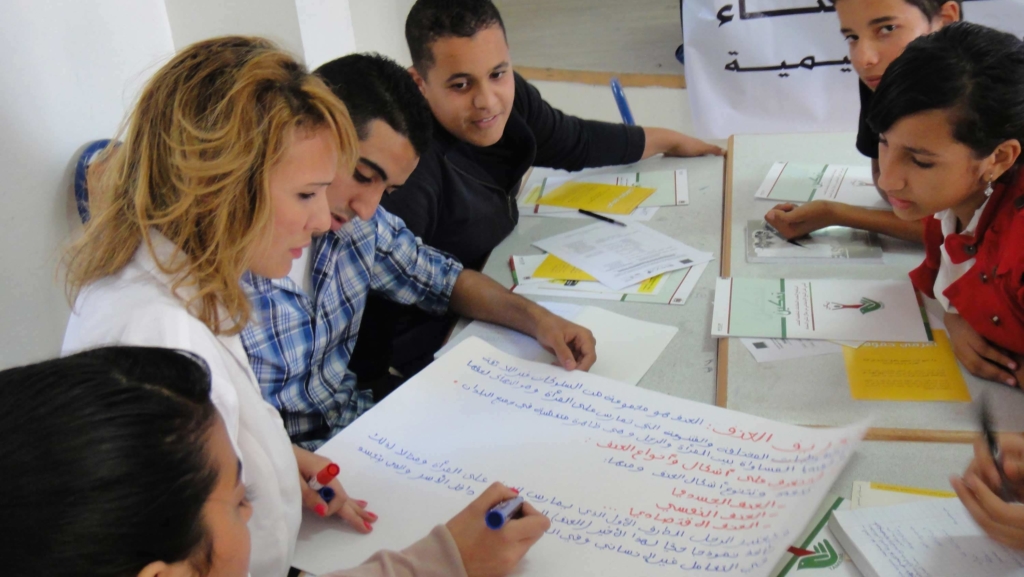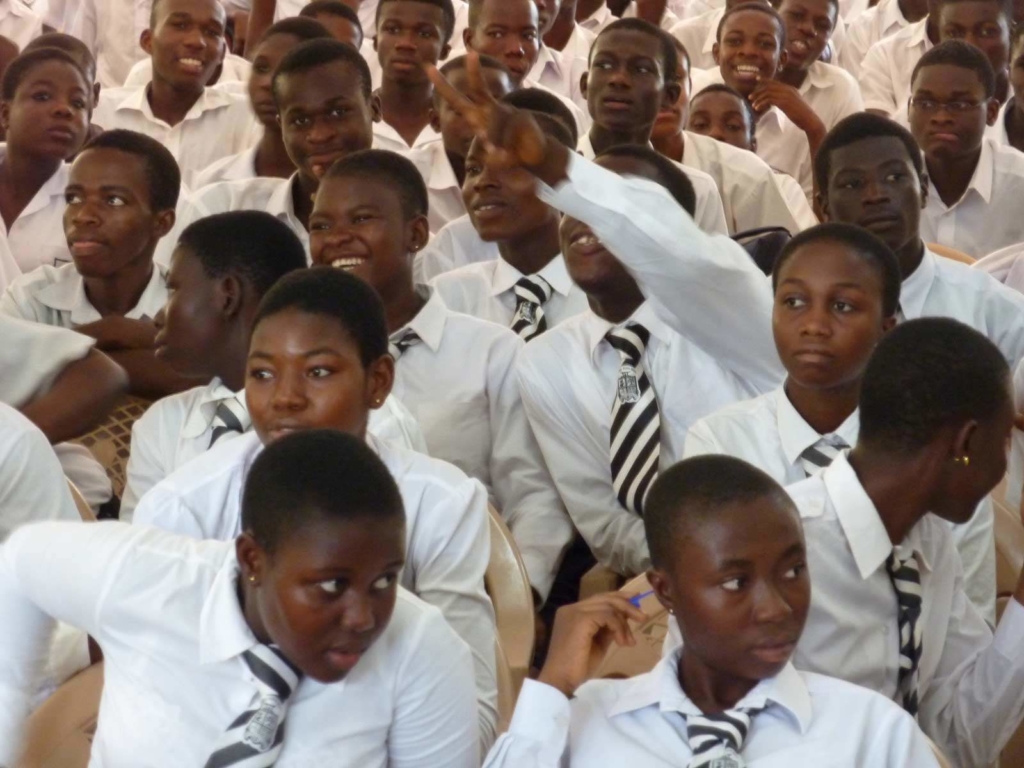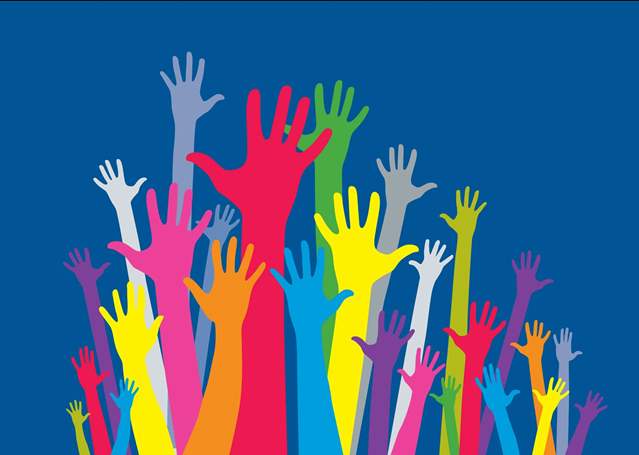Amnesty International supports schools and their wider communities in all regions of the world to build a global culture of human rights. Human Rights Friendly Schools aim to empower young people and promote the active participation of all members of the school community to integrate human rights values and principles into all areas of school life.
WHAT IS A HUMAN RIGHTS FRIENDLY SCHOOL?
A Human Rights Friendly School places human rights at the heart of the learning experience and makes human rights an integral part of everyday school life. From the way decisions are made in schools, to the way people treat each other, to the curriculum and extra-curricular activities on offer, right down to the very surroundings in which students are taught, the school becomes an exemplary model for human rights education.

A Human Rights Friendly School is founded on principles of equality, dignity, respect, non-discrimination and participation. It is a school community where human rights are learned, taught, practised, respected, protected and promoted. Human Rights Friendly Schools are inclusive environments where all are encouraged to take active part in school life, regardless of status or role, and where cultural diversity is celebrated. Young people and the school community learn about human rights by putting them into practice every day. Through an approach which goes beyond the classroom and into all aspects of school life, commonly called a ‘whole-school approach,’ a ‘holistic approach’ or ‘rights-based approach,’ both schools and young people become powerful catalysts for change in their wider communities.
GHANA: A HUMAN RIGHTS FRIENDLY SCHOOL IN PRACTICE
Students attending Accra High School in the Ghanaian capital may not see themselves as trend-setters in global education. But after a visit to their school late last year, Ghana’s late President John Atta Mills spoke of his great admiration for their success at making human rights an integral part of everyday school life. The school aims to build the capacity of the whole school community by promoting a democratic environment, innovative teaching methods and responsible citizenship. Students feel empowered through a representative student council that moots new ideas and voices the student body’s concerns. And the school has embraced human rights not only inside the classroom, but also as an integral part of its clubs and extra-curricular activities – a human rights garden maintained by students and staff is just one space where openness, tolerance and debate are promoted. Accra High School is one of a growing number of schools around the world using Amnesty International’s Human Rights Friendly Schools approach.

HUMAN RIGHTS FRIENDLY SCHOOLS SPAN THE GLOBE
Amnesty International’s Human Rights Friendly Schools project started in 2009 in 14 countries: Benin, Cote d’Ivoire, Denmark, Ghana, Ireland, Israel, Italy, Moldova, Mongolia, Morocco, Paraguay, Poland, Senegal and the United Kingdom. Today, the network of schools aspiring to become human rights friendly continues to expand, and currently covers 22 countries around the world.
WHAT ARE HUMAN RIGHTS FRIENDLY SCHOOLS?
The Human Rights Friendly Schools approach encourages and supports the development of a global culture of human rights by empowering young people, teachers and the wider school community to create human rights friendly school communities across the world. Participating schools work towards developing a whole-school approach to human rights education, integrating human rights values and principles into key areas of school life. Human Rights Friendly Schools reach beyond the classroom and out into the community to change the way people think about, and actively participate to address, human rights issues. It is founded on the belief that by increasing knowledge and changing behaviours and attitudes in entire communities, a global culture of human rights becomes possible.

The Human Rights Friendly Schools aims to:
- Empower young people and promote the active participation of all members of the school community in integrating human rights values and principles into all areas of school life.
- Enable young people to know their human rights and responsibilities and to become inspired to protect and defend their rights and the rights of others, based on values such as equality, dignity, respect, non-discrimination and participation.
The Human Rights Friendly Schools project is founded on the 10 Global Principles for Human Rights Friendly Schools. These principles are based on international human rights standards, norms and instruments such as the Universal Declaration on Human Rights. In order to become a Human Rights Friendly School, schools are encouraged to integrate the Global Principles into four key areas of school life: Governance; Relationships; Curriculum; and School environment.
BECOMING A HUMAN RIGHTS FRIENDLY SCHOOL
Schools implement the Human Rights Friendly Schools approach, with the involvement of the whole community and often with support from Amnesty International.
The school has creative control over how to integrate human rights, taking into account the framework of the national educational system and the social and cultural context in which it is situated, however, global standards in all key areas of school life outline what all Human Rights Friendly Schools are working towards. Creativity and innovation are encouraged! Support, guidance and examples of inspirational activities are available in the Human Rights Friendly Schools Toolkit, Pamphlets and Poster.
The toolkit provides information to schools on how to implement the Human Rights Friendly Schools approach. It offers practical suggestions for schools around the world to make human rights a viable part of their curricula, teaching methodology and broader learning environment that has a lasting impact not just on students, but also on their wider communities.
Pamphlets for different stakeholders in the school’s community allow Human Rights Friendly Schools to be introduced easily and a poster outlining what Human Rights Friendly Schools are, can be used to display in engaged schools.
Assessing the impact of the project over time is an important aspect of the project. Results of monitoring and evaluation activities are used both to improve the project and to make interim amendments to a school’s action plan if needed, and to assess how the project is meeting its overall goals and objectives.
Click to download the Toolkit, Student’s Pamphlet, Teacher’s Pamphlet, Families and Communities Pamphlet, Administrator’s Pamphlet and Poster in English, French and Spanish.
WHY ARE HUMAN RIGHTS IMPORTANT IN SCHOOLS?
Schools have a critical role to play in our lives and in the life of the community. As a reflection of wider society, schools are key to socializing younger generations, preparing learners to become active and engaged members of society. In an interconnected and globalized 21st century, young people are being exposed to a diverse and changing world around them, a world in which poverty, inequality and other injustices are still very much a part of the lives of millions.
Human rights can give schools around the world a shared language of equality, non-discrimination, inclusion, respect, dignity and participation that is crucial to the goal of achieving a more peaceful and just global society.
Human rights education is a critical means of instilling the knowledge, skills, attitudes and values that can foster a culture of human rights. Amnesty International defines a culture of human rights as an atmosphere in which all members of a given community understand, value and protect human rights, where the values of equality, dignity, respect, non-discrimination and participation anchor policies and are the basis for decision making processes within the community.
For more information on Human Rights Friendly Schools, please contact your national Amnesty International office or email [email protected].

